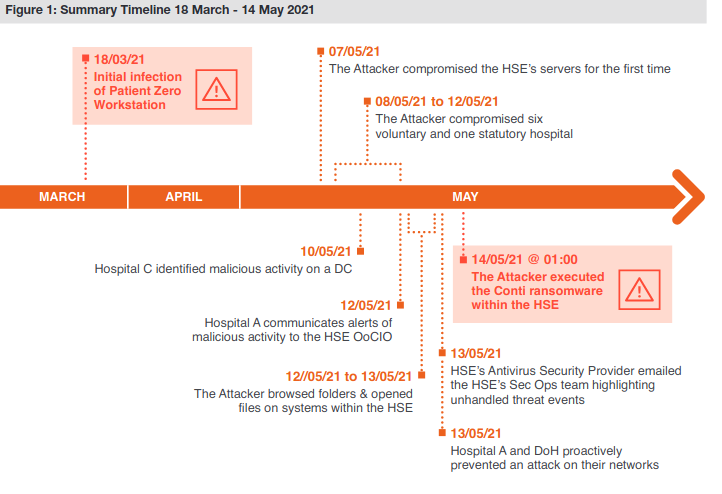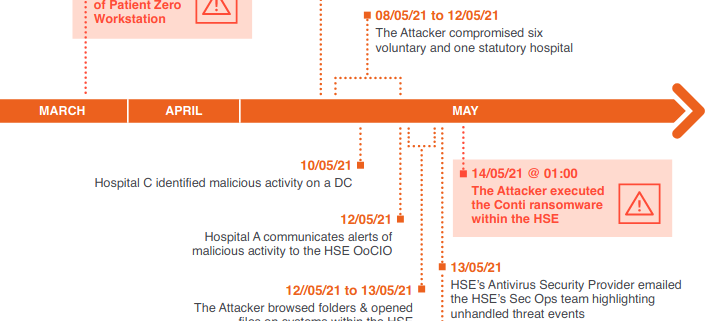Inside Ireland’s Public Healthcare Ransomware Scare – Krebs on Security
The consulting firm PricewatersCoopers recently published lessons learned from the disruptive and costly ransomware attack in May 2021 on Ireland’s public health system. The unusually candid post-mortem found that nearly two months elapsed between the initial intrusion and the launching of the ransomware. It also found affected hospitals had tens of thousands of outdated Windows 7 systems, and that the health system’s IT administrators failed to respond to multiple warning signs that a massive attack was imminent.

PWC’s timeline of the days leading up to the deployment of Conti ransomware on May 14.
Ireland’s Health Service Executive (HSE), which operates the country’s public health system, got hit with Conti ransomware on May 14, 2021. A timeline in the report (above) says the initial infection of the “patient zero” workstation happened on Mar. 18, 2021, when an employee on a Windows computer opened a booby-trapped Microsoft Excel document in a phishing email that had been sent two days earlier.
Less than a week later, the attacker had established a reliable backdoor connection to the employee’s infected workstation. After infecting the system, “the attacker continued to operate in the environment over an eight week period until the detonation of the Conti ransomware on May 14, 2021,” the report states.
According to PWC’s report (PDF), there were multiple warning signs about a serious network intrusion, but those red flags were either misidentified or not acted on quickly enough:
- On Mar. 31, 2021, the HSE’s antivirus software detected the execution of two software tools commonly used by ransomware groups — Cobalt Strike and Mimikatz — on the Patient Zero Workstation. But the antivirus software was set to monitor mode, so it did not block the malicious commands.”
- On May 7, the attacker compromised the HSE’s servers for the first time, and over the next five days the intruder would compromise six HSE hospitals. On May 10, one of the hospitals detected malicious activity on its Microsoft Windows Domain Controller, a critical “keys to the kingdom” component of any Windows enterprise network that manages user authentication and network…

